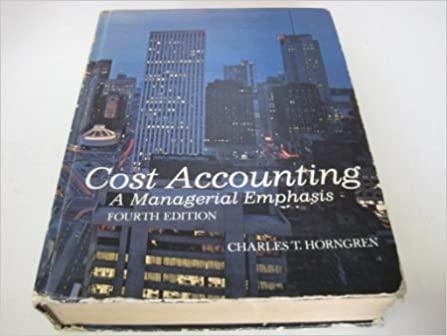Please help me solve this asap. Thanks in advance!




Consolidation worksheet for gain on constructive retirement of subsidiary's debt with no AAP- Equity method Assume that a Parent company acquires a 80% interest in its Subsidiary on January 1, 2015. On the date of acquisition, the fair value of the 80 percent controlling interest was $640,000 and the fair value of the 20 percent noncontrolling interest was $160,000. On January 1, 2015, the book value of net assets equaled $800,000 and the fair value of the identifiable net assets equaled the book value of identifiable net assets (i.e., there was no AAP or Goodwill). On December 31, 2016, the Subsidiary company issued $800,000 (face) 8 percent, five-year bonds to an unaffiliated company for $832,000. The bonds pay interest annually on December 31, and the bond premium is amortized using the straight-line method. This results in annual bond-payable premium amortization equal to $6,400 per year. On December 31, 2018, the Parent paid $776,000 to purchase all of the outstanding Subsidiary company bonds. The bond discount is amortized using the straight-line method, which results in annual bond- investment discount amortization equal to $8,000 per year. The Parent and the Subsidiary report the following financial statements for the year ended December 31, 2019: Parent Subsidiary Income statement Sales Cost of goods sold Gross profit Operating & other expenses Bond interest income Bond interest expense Income from subsidiary Net income Statement of retained earnings BOY retained earnings Net income Dividends Ending retained earnings Parent Subsidiary Balance sheet $4,500,000 $800,000 Assets (2,800,000) (500,000) Cash 1,700,000 300,000 Accounts receivable (1,400,000) (146,000) Inventories 72,000 PPE, net (57,600) Equity investment 62,720 Investment in bond (net) $434,720 $96,400 Liabilities and stockholders' equity $1,577,840 $240,800 Accounts payable 434,720 96,400 Other current liabilities (200,000) (40,000) Bond payable (net) $1,812,560 $297,200 Other long-term liabilities Common stock APIC Retained earnings $700,000 $400,000 850,000 600,000 900,000 800,000 2,000,000 1,500,000 778,560 784,000 $6,012,560 $3,300,000 $700,000 900,000 1,000,000 600,000 1,000,000 1,812,560 6,012,560 $450,000 650,000 812,800 450,000 140,000 500,000 297,200 3,300,000 The parent uses the equity method of pre-consolidation investment bookkeeping. Provide the consolidation entries and prepare a consolidation worksheet for the year ended December 31, 2019. Round answers to the nearest whole number. Consolidation Journal Description Debit Credit [C] Equity income 0 0 0 0 0 0 0 0 0 0 Investment in Subsidiary Noncontrolling Interest Common Stock (Subsidiary) APIC (Subsidiary) [E] 0 0 0 0 . 0 0 0 0 0 0 0 Noncontrolling interest [lbond] Bond payable (net) 0 0 > 0 0 . 0 0 0 0 Interest expense Investment in Subsidiary 0 0 $ Use negative signs with your answers in the Consolidated column for: Cost of goods sold, all expenses (inc. Total expenses), Income attributable to NCI and Dividends. Consolidation Worksheet Parent Subsidiary Debit Credit Consolidated Income Statement Sales $4,500,000 $800,000 Cost of goods sold (2,800,000) (500,000) Gross profit 1,700,000 300,000 Operating & other expenses (1,400,000) (145,000) Bond interest income 72,000 [lbond] Bond interest expense (57,600) 0 [lbond] Total expenses (1,328,000) (203,600) Equity Income from Subsidiary 62,720 [C] Consolidated Net Income 434,720 96,400 Income attributable to NCI Income attributable to Control Int $434,720 $96,400 Retained Earnings Statement Beg. Ret. Earnings $1,577,840 $240,800 [E] Income attributable to Control Int 434,720 96,400 Dividends Declared (200,000) (40,000) [C] Ending Retained Earnings $1,812,560 $297,200 $ OOO OOO 0 Support 0 0 0 0 o Olo $ 0 O O 0 0 0 Balance Sheet 0 0 Cash Accounts receivable Inventories Property, Plant & Equipment, net Investment in Subsidiary $700,000 $400,000 850,000 600,000 900,000 800,000 2,000,000 1,500,000 778,560 0 0 0 0 [C] 0 [E] 0 [lbond] 0 [lbond] 0 $ 0 0 0 784,000 $6,012,560 $3,300,000 $700,000 $450,000 900,000 650,000 812,800 [lbond] 1,000,000 450,000 600,000 140,000 [E] 1,000,000 500,000 [E] 1,812,560 297,200 0 Investment in Bond (net) Total Assets Accounts Payable Other current liabilities Bond Payable (net) Other long-term liabilities Common Stock APIC Retained Earnings Noncontrolling Interest 0 0 0 0 0 0 0 0 O Olo [C] [E] Total Liabilities and Equity $6,012,560 $3,300,000 $ 0 $ $ 0











